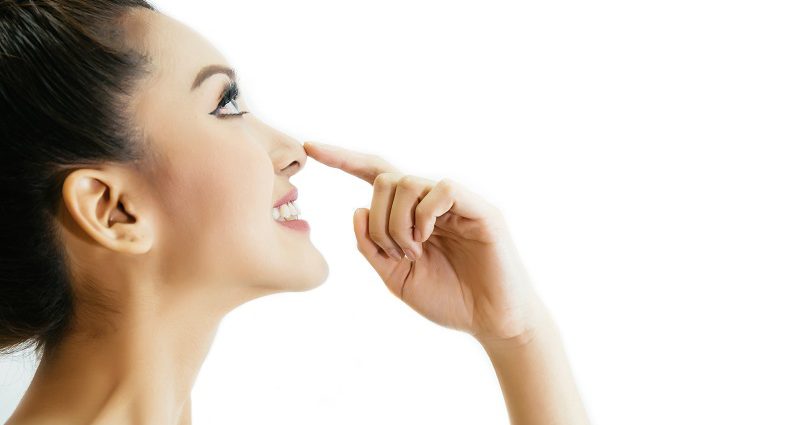Ethnic Rhinoplasty: Special Considerations

Reviewed by Julius Few, MD
Cosmetic surgery appeals to people of all different ethnicities and backgrounds. In fact, ethnic plastic surgery is on the rise, and ethnic rhinoplasty is one of the most frequently requested cosmetic procedures among African-Americans, Asians and Hispanic-Americans. And it’s not just women opting for ethnic nose surgery. Male rhinoplasty too is on the rise.
In previous decades, the goal of ethnic rhinoplasty was to create more westernized noses, but times have changed. Today most individuals want to keep their ethnicity, and opt instead for subtle cosmetic enhancements. This is often the case for Asians who seek Asian double eyelid surgery to create a crease in their “single eyelids.”
Ethnic Rhinoplasty: The Consultation
The initial consultation for ethnic rhinoplasty is important. Tell your surgeon exactly what it is you don’t like about your nose, and what you may want to change. Bring in photographs to illustrate how you want your new nose to look. Plastic surgeons can also use high-tech computer imaging to show you how your new nose will look on your face. During this visit, your surgeon can help determine whether your goals and expectations are realistic. He or she will also evaluate your skin, cartilage strength and bone structure, as well as assess the amount of cartilage available if grafting is needed.
Choosing a board-certified plastic surgeon with experience in ethnic rhinoplasty is essential because there are challenges that are specific to ethnic rhinoplasty. For example, darker skin is more prone to scarring and pigment abnormalities due to a brown pigment found in the skin (melanin). In addition, certain types of ethnic skin may be thicker and oilier than fair skin. These factors present technical and aesthetic challenges that are best managed by a surgeon with extensive experience performing ethnic rhinoplasty.
Preparing for Ethnic Rhinoplasty
Your surgeon should go over a list of preoperative dos and don’ts with you before your nose reshaping surgery. If you smoke, quit at least one month before your surgery because smoking can interfere with wound healing. Certain medications, such as aspirin and other anti-inflammatory drugs, can increase your risk of bleeding and should be stopped before surgery. Make sure to tell your doctor about any and all medications that you are taking, including herbal supplements. Many of these may increase the risks of your surgery.
Your Ethnic Rhinoplasty Procedure
The ethnic rhinoplasty procedure differs by ethnicity, anatomy and aesthetic goals.
For example, the African American nose may have thicker nasal skin, shorter nasal bones and a wide nose base with large, open nostrils. By contrast, an Asian nose tends to have a bulbous tip with a low, wide and flat nasal bridge. Hispanic-Americans typically have thick nasal skin, a wide nasal bridge and a wide and thick nasal base. Members of other ethnic groups may also have distinctive facial features and patterns.
Ethnic rhinoplasty can subtly increase the height or decrease the width of a nose, change the shape of the nasal tip or alter any other feature. Sometimes extra cartilage must be grafted to the bones to help shape the tip of a flat nose. If the base is wide, your surgeon may need to make up to three incisions to narrow it.
Most ethnic rhinoplasty is performed as an open procedure, meaning the incisions are made in the vertical strip of skin separating the nostrils (the columella). The skin and soft tissue are then elevated off the underlying structures of the nose so the surgeon can see the nasal anatomy. If there is no tip refinement needed, the rhinoplasty can be done as a closed procedure, meaning the incision is made inside of your nose.
Your surgeon will use either local anesthesia and intravenous sedation or general anesthesia to perform the rhinoplasty. It may be done in the hospital or an outpatient facility. Arrange for someone to drive you home after the procedure if you are not staying overnight.
Ethnic Rhinoplasty: Special Precautions
Pretreating dark skin with skin bleach and Retin-A can reduce the risk of scarring before cosmetic surgery. This can start anytime from two to six weeks before the procedure, and can continue for several weeks after. Pretreatment can also help improve skin quality. Thicker skin tends to be oilier, but astringents and other topical products can dry the skin before nose surgery. Some surgeons may suggest microdermabrasion to clean the nose and open any blocked pores before rhinoplasty. Ask your surgeon what type of pretreatment is recommended during your consultation.
Due to the risks of scarring and pigment anomalies, there is a greater chance of revision rhinoplasty among people with ethnic skin. There are also other risks. For example, thick skin can blunt the sculpting that is done to reshape the tip. As a result, your surgeon may have to go back to do some touch-ups after the swelling has subsided.
The best way to maximize your results and minimize your risk of complications and/or revision surgery is to choose a board-certified plastic surgeon who specializes in ethnic rhinoplasty. Make sure that ethnic rhinoplasty comprises a large part of your surgeon’s practice. Ask how many revision rhinoplasty surgeries your surgeon performs on a monthly basis. He or she should perform ethnic rhinoplasty on a monthly basis.
Take-home points
- Increased risk of scarring or pigment abnormalities
- Greater risk of revision rhinoplasty
- Special precautions needed
- Surgeon experience matters
Ethnic Rhinoplasty Recovery
You may be unable to breathe through your nose for the first 24 to 72 hours because nasal packing is used to help reduce swelling and bleeding. There may be some pain and/or nausea following rhinoplasty. Your surgeon can prescribe pain killers to help alleviate the pain. There may be some bleeding during the first few days.
Thicker skin tends to swell more than thin skin. As a result, it may take longer for swelling to subside after ethnic rhinoplasty. Elevate your head for the first 24 hours after surgery to reduce swelling and discomfort. Some surgeons may use steroid injections to reduce excessive swelling following ethnic rhinoplasty. A good holistic remedy that has been shown to be useful for swelling is Arnica Montana.
Avoid any trauma to the nose during the first week after surgery. Blowing your nose is not permitted after rhinoplasty. As a general rule, you will wear a cast for the first week after rhinoplasty followed by taping during the second week, and you will tape your nose at night for six to eight weeks after surgery to further reduce swelling.
Ethnic Rhinoplasty Risks
All surgeries come with risks, including ethnic rhinoplasty. Risks may include infection, bleeding, breathing issues, dissatisfaction with cosmetic results, additional surgeries, septal perforation (a small hole in the septum, causing turbulence that results in a whistle when a person speaks or sings), anesthesia complications and death. Scarring and pigment abnormalities may also occur after ethnic rhinoplasty. Your plastic surgeon should discuss your rhinoplasty risk profile with you in advance.
Ethnic Rhinoplasty Cost
On average, ethnic rhinoplasty costs range from $3,000 to $8,000. The cost comprises the surgical fee, anesthesia fee, and facility fee. The anesthesia fee ranges from $600 to $2,000, the facility fee ranges from $700 to $3,000, and the rest of the cost is the surgeon’s fee.
Suggested Reading
About the Reviewer of This Article
Julius Few, MD, is the founder of the Few Institute For Aesthetic Plastic Surgery in Chicago. Board certified by the American Board of Plastic Surgery and the American Board of Surgery, he is also a clinical associate professor in the division of plastic surgery at the University of Chicago and the current president of the Illinois Society of Plastic Surgeons.
Dr. Few received his medical degree from the University of Chicago Pritzker School of Medicine, and completed his residency in general surgery at the University of Michigan Medical Center in Ann Arbor, followed by plastic surgery training at Northwestern University in Chicago. He has also received special facial and eye cosmetic training in Honolulu, New York and Atlanta.



